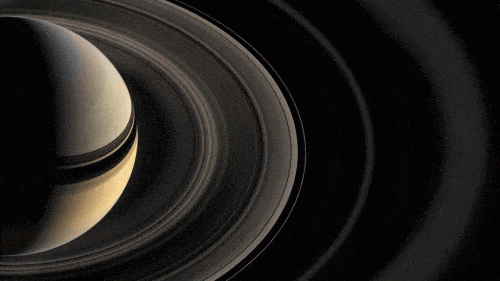Today, on December 4th, the main engine of the Cassini spacecraft will be activated for the last time in preparation for a change of course that will eventually lead it to crash into Saturn, but until then the spacecraft is expected to have a long period of discoveries involving a dangerous approach to Saturn's rings

Today, on December 4, the main engine of the Cassini spacecraft will be activated for the last time in preparation for a change of course that will eventually lead it to crash into Saturn, but until then the spacecraft is expected to make a long period of discoveries involving a dangerous approach to Saturn's rings.
During the last year, the control center personnel of the Cassini spacecraft adjusted its trajectory so that it would be as close as possible to the equator, which is also the plane of the rings. On November 30, it received a gravitational boost from the large moon Titan and entered the first stage of its expected dramatic end.
The spacecraft was launched in 1997 and arrived at Saturn in 2004 for a comprehensive study of the planet, its rings and moons. During the journey, the spacecraft made countless dramatic discoveries, including an underground ocean on Enceladus, and seas made of liquid methane on Titan.
Until April 22, 2017, Cassini will circle the planet from pole to pole, and about 20 times a week it will make a dangerous approach to the unexplored areas around the edge of the main ring. "We call this phase a ring dampener orbit, because we will pass near the outer edge of the rings," says Linda Spilker, a Cassini project scientist at NASA's Jet Propulsion Laboratory in California. "In addition, we have two tools that can sample particles and gases when passing through the plane of the rings, so that Cassini will indeed graze the rings.
In many of these transits, Cassini instruments will be aimed directly at sampling particles from the rings and molecules of dark gases discovered near the rings. During the first two orbits the spacecraft will cross a barely visible ring made of small meteors hitting the two small moons Janus and Epimetheus. The halves of the rings in March and April will launch the spacecraft through the dust region on the outskirts of the F ring. According to Earl Mays, Cassini project manager at JPL, this time, too, it is not actually crossing the ring, but a passage at a distance of 7,800 kilometers from it.
Ring F marks the boundary of the central ring system. Saturn has several additional ring systems, much dimmer and much more distant from the planet. The F ring is an ever-changing structure: images taken by Cassini have shown objects like bright streams, shaggy filaments and dark channels that appear to appear and develop within hours. The ring is also extremely narrow, only about 800 kilometers wide, and at its core is a highly compressed area only about 50 kilometers wide.
Passing near the rings will allow observation of a series of small moons orbiting near or inside the rings, including the best view of the moons - Pandora Atlas, Pan and Daphinis. There will also be a good opportunity to closely observe the main rings A, B and F. The short distance will make it possible to discover details that have not been possible since Cassini entered orbit in 2004 and passed near the rings. In some cases, it will be able to photograph with a resolution of one kilometer per pixel and allow the construction of a high-resolution scan of the structure of the rings.
During these orbits, Cassini will pass 90 kilometers above Saturn's cloud tops, but this will only be the prelude to the grand finale.
After 20 years in space, the final phase will begin, during which the spacecraft will get closer and closer to the atmosphere - at an altitude of 1,628 km above the cloud tops and circle repeatedly between the atmosphere and the rings. Until eventually it will be intentionally crashed into the atmosphere on September 15th.
